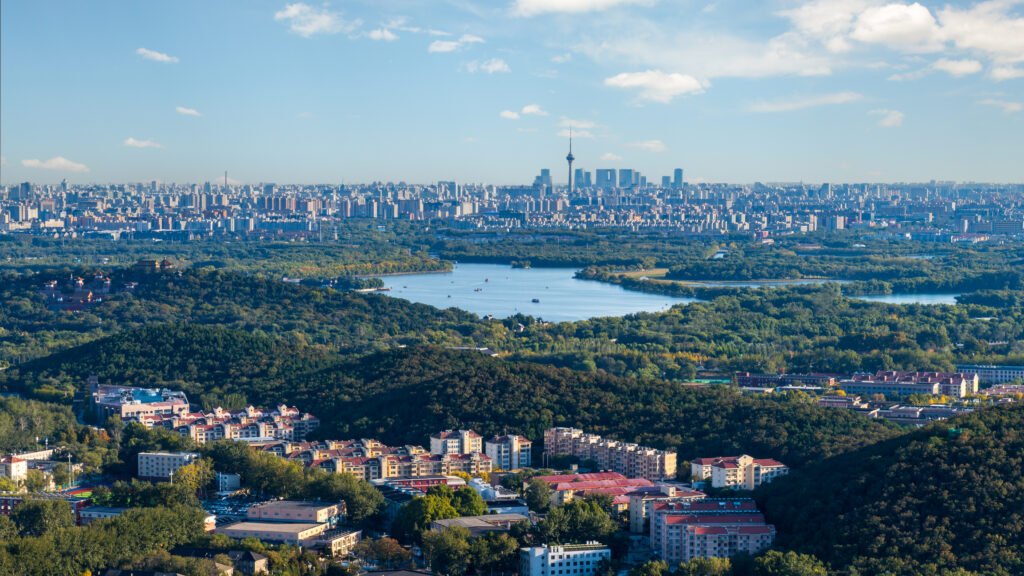
Beijing, the sprawling capital of China, is more than just a political and cultural center; it’s a living, breathing testament to the country’s vast culinary heritage. From humble street food vendors to opulent imperial dining halls, Beijing offers a gastronomic landscape as diverse and captivating as the city itself. Let’s embark on a journey to discover why Beijing deserves its place among China’s top culinary destinations, delve into its rich history, and uncover the unforgettable food adventures that await within its bustling streets and ancient walls.
Why Beijing Ranks Among China’s Best Culinary Locations
1. A Meeting Point of Culinary Traditions: Beijing’s history as the imperial capital for centuries has drawn culinary talent from every corner of China. This influx of chefs and cuisines has transformed Beijing into a melting pot, offering a comprehensive taste of the nation’s vast and varied gastronomic landscape.
2. Imperial Cuisine: No culinary exploration of Beijing is complete without experiencing the grandeur of imperial cuisine. Dishes prepared for the emperors and their court showcase the artistry, precision, and luxurious ingredients that defined dynastic China.
3. Peking Duck Perfection: Peking duck, with its crispy skin and succulent meat, is Beijing’s most iconic dish, a symbol of the city’s culinary prowess. The meticulous preparation techniques, passed down through generations, make it a must-try experience.
4. Street Food Delights: Beijing’s bustling hutongs (traditional alleyways) are a treasure trove of street food delights. From savory crepes to sweet dumplings, these affordable and delicious snacks offer a glimpse into the city’s everyday food culture.
5. Wheat-Based Wonders: As a northern city, Beijing’s cuisine relies heavily on wheat, resulting in a diverse array of noodle dishes, dumplings, and savory pancakes that are both satisfying and comforting.
6. Regional Specialties: Beijing is a fantastic place to sample regional Chinese foods, particularly from the North. Dumplings, noodles, and meat heavy dishes often form the basis of the cuisine.
7. Innovation and Modernity: As a global metropolis, Beijing’s culinary scene also embraces innovation. Modern restaurants and experimental chefs are pushing the boundaries of traditional cuisine, creating exciting new dining experiences.
8. Accessibility: With a vast and efficient public transportation system, everything is easy to find with a few subway rides. This convenience is a huge asset when it comes to hunting down the best foods in the city.
Embark on a Culinary Adventure in Beijing: A Guide for Food Lovers

To truly experience the essence of Beijing’s food scene, immerse yourself in its diverse flavors and rich history. Here are some unforgettable culinary adventures:
1. Peking Duck Pilgrimage: Savor the iconic Peking duck at renowned establishments like Quanjude or Da Dong. Observe the meticulous carving process and enjoy the crispy skin, thinly sliced meat, and delicate pancakes that make this dish so special.
2. Hutong Street Food Tour: Explore the city’s historic hutongs, sampling local snacks like jianbing (savory crepes), baozi (steamed buns), and rou jia mo (meat-filled buns). Be sure to try Beijing yogurt (na酪g酪) for a refreshing treat.
3. Imperial Cuisine Experience: Indulge in a meal fit for an emperor at a restaurant specializing in imperial cuisine. Sample elaborate dishes like Buddha Jumps Over the Wall and bird’s nest soup, prepared with meticulous attention to detail and luxurious ingredients.
4. Dumpling Delights Exploration: Explore the world of Beijing dumplings, sampling different fillings, shapes, and cooking methods. Try boiled dumplings (shuijiao), steamed dumplings (zhengjiao), and pan-fried potstickers (guotie).
5. Noodle Nirvana: Slurp your way through Beijing’s noodle scene, sampling different styles like zhajiangmian (noodles with fermented black bean sauce), lamian (hand-pulled noodles), and dandanmian (spicy Sichuan noodles).
6. Jiaozi-Making Class: Learn the art of making traditional Chinese dumplings from scratch by joining a hands-on jiaozi-making class. Create the dough, prepare the filling, and learn the techniques for folding perfect dumplings.
7. Beijing Hot Pot Adventure: Experience the communal joy of Beijing hot pot, a local favorite that’s perfect for cold winter nights. Choose your broth base, select your favorite ingredients, and cook them at the table, creating a personalized and interactive meal.
8. Tea Tasting Experience: Discover the world of Chinese tea by visiting a traditional tea house.
9. Traditional Breakfast at Yao Ji Chao Gan: Eat this traditional Beijing breakfast stew in the neighborhood where it was created. This is a unique dish that will really expose you to the heart of Beijing cuisine.
10. Nanchizi street food: Try some of the different and innovative dishes in this exciting neighborhood.
A Taste of History: Tracing Beijing’s Culinary Evolution
Beijing’s culinary history is as complex and fascinating as the city itself. The food culture has been influenced by centuries of imperial rule, regional migration, and cultural exchange.
* Imperial Influence: As the capital city, Beijing’s cuisine has been heavily influenced by the preferences of the emperors and their court. Imperial cuisine, with its emphasis on luxury and artistry, has shaped the city’s food culture for centuries.
* Manchu Heritage: The Qing Dynasty (1644-1912), ruled by the Manchus, brought new culinary influences to Beijing. Manchu cuisine, known for its hearty stews and reliance on wheat, became an important part of the city’s food scene.
* Regional Migration: As people migrated to Beijing from across China, they brought their own culinary traditions with them, transforming the city into a melting pot of flavors and techniques.
* Post-Revolutionary Changes: The Communist revolution in 1949 brought significant changes to Beijing’s food culture. Private restaurants were nationalized, and emphasis was placed on providing affordable and accessible food for the masses.
* Modern Renaissance: In recent decades, Beijing has experienced a culinary renaissance. While maintaining deep respect for traditional flavors and techniques, the city’s chefs have been innovating and elevating Beijing cuisine to new heights. This blend of tradition and innovation has solidified Beijing’s status as a top destination for food lovers from around the world.

10 Iconic Recipes That Define Beijing’s Culinary Landscape
1. Peking Duck (北京烤鸭): Perhaps Beijing’s most famous dish, Peking duck is prepared through a meticulous multi-step process that involves inflating the duck skin, glazing it with malt sugar, and roasting it in a special oven. The crispy skin is the highlight, often served with thin pancakes, scallions, and sweet bean sauce.
2. Zhajiangmian (炸酱面): This classic Beijing noodle dish features thick wheat noodles topped with a savory sauce made from fermented black beans and ground pork. It’s a comforting and satisfying meal that’s popular throughout the city.
3. Jianbing (煎饼): This savory crepe, cooked on a hot griddle, is a popular Beijing street food. The thin batter is spread with egg, filled with pickled vegetables, crispy crackers, and a variety of sauces, creating a flavorful and portable snack.
4. Jiaozi (饺子): These boiled dumplings are a staple of Beijing cuisine, particularly during festivals and celebrations. They can be filled with a variety of meats, vegetables, and seafood, and are often served with a dipping sauce of soy sauce, vinegar, and chili oil.
5. Baozi (包子): Steamed buns filled with meat, vegetables, or sweet fillings. The most popular flavor is pork.
6. Rou Jia Mo (肉夹馍): Often called the “Chinese hamburger,” rou jia mo consists of shredded meat (typically pork) stuffed into a flatbread bun. The meat is slow-cooked in a flavorful broth, resulting in a tender and juicy filling.
7. Jing Jiang Rou Si (京酱肉丝): Literally meaning “shredded pork in Beijing sauce,” this dish features thinly sliced pork stir-fried in a sweet bean sauce, served with shredded scallions and thin pancakes.
8. Mung Bean Milk (豆汁): A local favorite, mung bean milk is a drink that is fermented, then strained. It has a strong, sour flavor that is not for everyone.
9. Wan Dou Huang (豌豆黄): This local dessert is a traditional Chinese dessert featuring the sweet flavor of peas.
10. Tanghulu (糖葫芦): These candied fruits are a delicious snack during the winter season in Beijing.
A City That Constantly Evolves
Beijing’s culinary scene is a testament to the city’s rich history, innovative spirit, and diverse cultural influences. From humble street food stalls to world-renowned Michelin-starred establishments, Beijing offers a gastronomic journey that captivates food lovers from around the globe.
As you explore this dynamic metropolis, you’ll discover that in Beijing, food is not just sustenance – it’s a way of life, a celebration of tradition, and a gateway to understanding the heart and soul of Chinese culture. Whether you’re savoring a perfectly prepared Peking duck, slurping a steaming bowl of zhajiangmian, or exploring the bustling street food markets, Beijing promises an unforgettable culinary adventure. The city’s ability to honor its culinary traditions while embracing innovation ensures that Beijing will continue to be a top destination for food enthusiasts for years to come. With its unique blend of imperial heritage, regional influences, and modern culinary trends, Beijing offers a feast for all the senses, making it a must-visit destination for anyone seeking to experience the true flavors of China.


